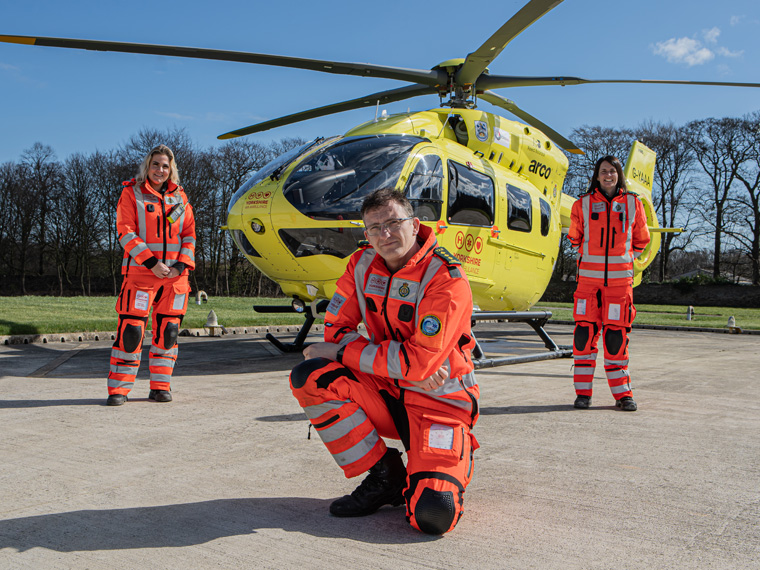In June 2019, we officially opened our state-of-the-art Simulation Suite situated at our Nostell airbase.
The suite is a fully immersive training room that can be adapted to replicate various real life trauma situations. It features 360 degree projectable walls, a scent dispersal machine and is temperature controlled. The simulation suite not only tests our paramedics’ clinical skills, but it also tests their sensory system, similarly to what would happen on a call out. The suite also features a family of manikins, known as Simbodies, which are life casts of cadavers to give them the look and feel of a real person. The elderly manikin Vivien was specially made for the Yorkshire Air Ambulance, casted from a woman still alive and living in London today.
Simbodies have movable joints and limbs and are anatomically correct with airways and nostrils and skin suitable for needle decompression. The manikins come with specialist moulage kits, which are sleeves with common injuries such as fractures and burns that can be attached to the manikin for the paramedics to train on.
Matt Syrat, Clinical Operations Manager for the YAA, said: “When practising procedures on our life-like Simbodies, it gives you the sense that you are working on a real life person and can evoke some of the emotional feelings to what you may feel on a real job.”
He continued:“The Simbodies also enable us to practice complex procedures that the older style manikins weren’t capable of.”
Simulation training exercises take place several times a week, demand permitting, with a facilitator observing from a control room. Exercises are selected using ‘Simcards’ designed by our paramedics based on call outs they have attended previously to add realism to the simulation.
After each training session, the crew will debrief and discuss the exercise in detail and what could be improved. “The Simulation exercises are not an assessment. It is peer support from colleagues with an equal skillset and experience, making sure we all have the same training”, said Matt.
Not only does the simulation suite test our crews current skills, it also enables them to practice new industry techniques and technology in a safe environment to see how they would perform on a job. The Simulation Suite has been particularly useful testing the skills of the latest HEMS recruits to encourage the development of their skills and ensure they have the same level of training as the current HEMS paramedics
According to Paramedic personal reflection reports, more than three quarters (85%) of our HEMS paramedics have noted improvements in their confidence from using the Simulation Suite, as well as increased muscle memory, which has enabled them to recall procedures quicker.
Since opening the suite six months ago, specialist teams across Yorkshire such as HART (Hazardous Area Response Team) and RAT (Red Arrest Team) have both had access to the facilities allowing our HEMS paramedics the opportunity to facilitate the training for them and share their critical care experiences in the process.
“By opening our simulation suite to more specialised groups, we are able to ensure the clinical exposure they get is highly tested at the same level as their job demands of them”, said Matt.
Speaking of the future, Matt said: “In a few years down the line, we would like to open the facility to more specialist teams such as the Police fire arms teams along with specialist Fire and Rescue teams.”
He continued: “The Sim Suite has already proven to be life changing for us in terms of our training.”


